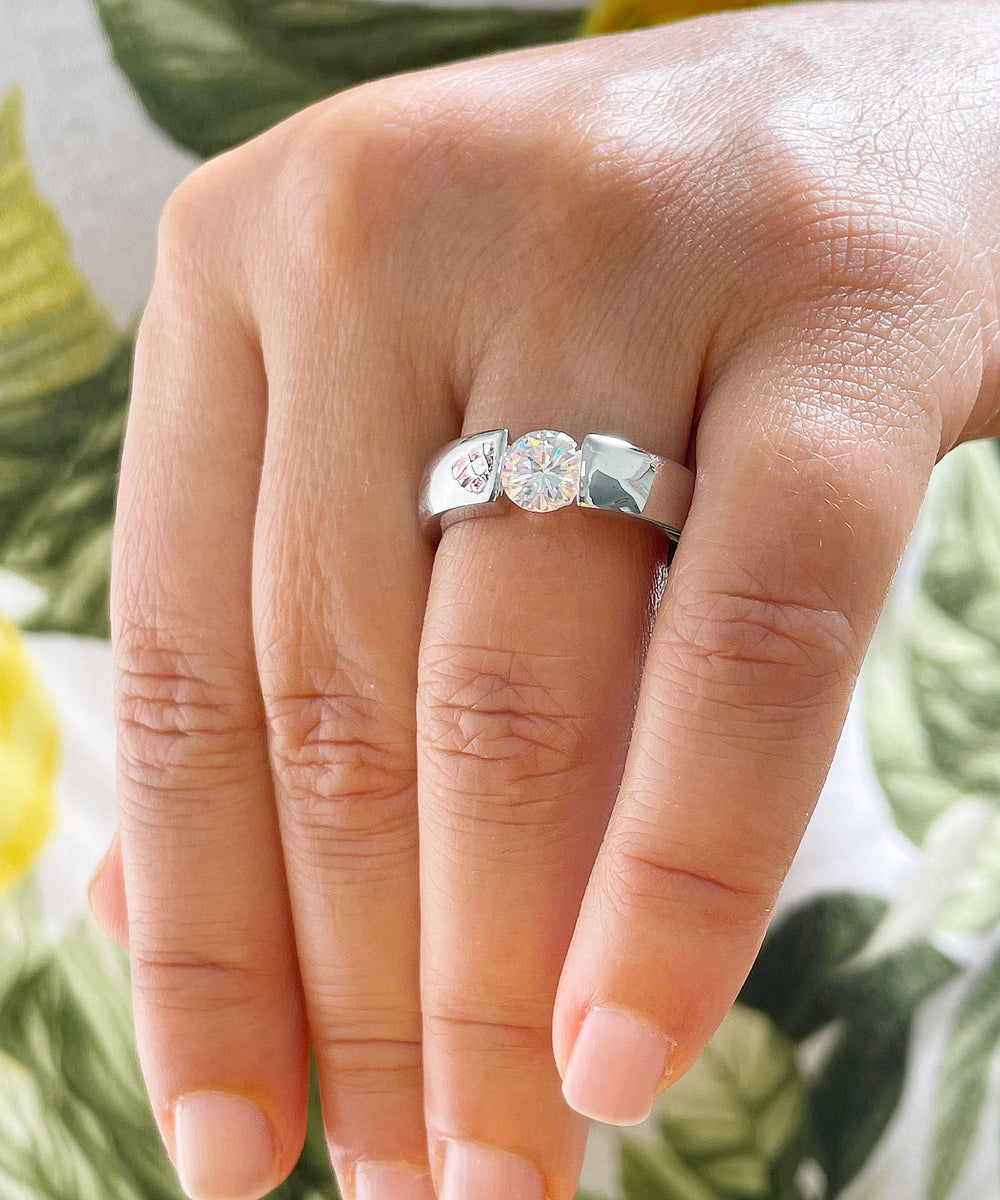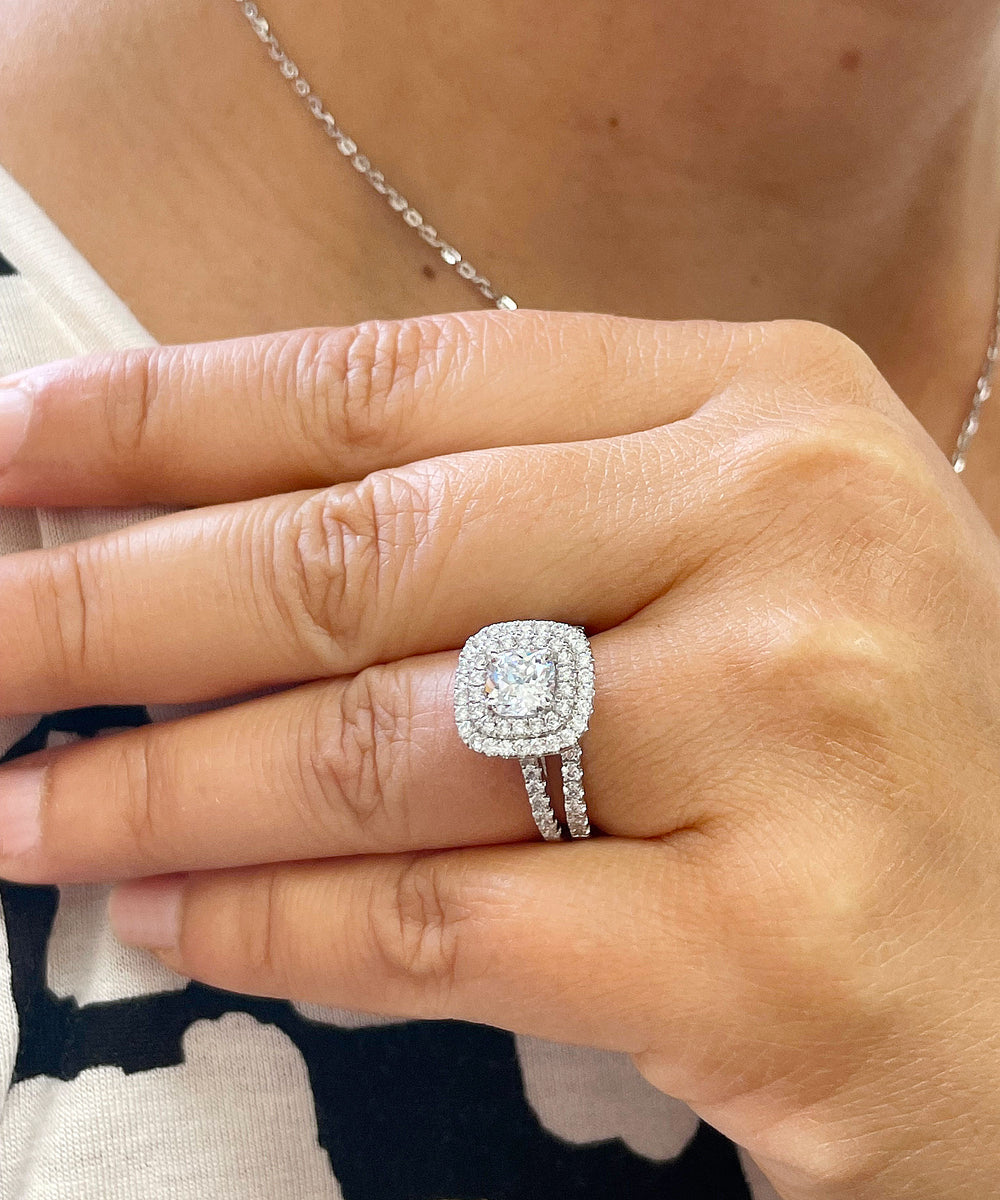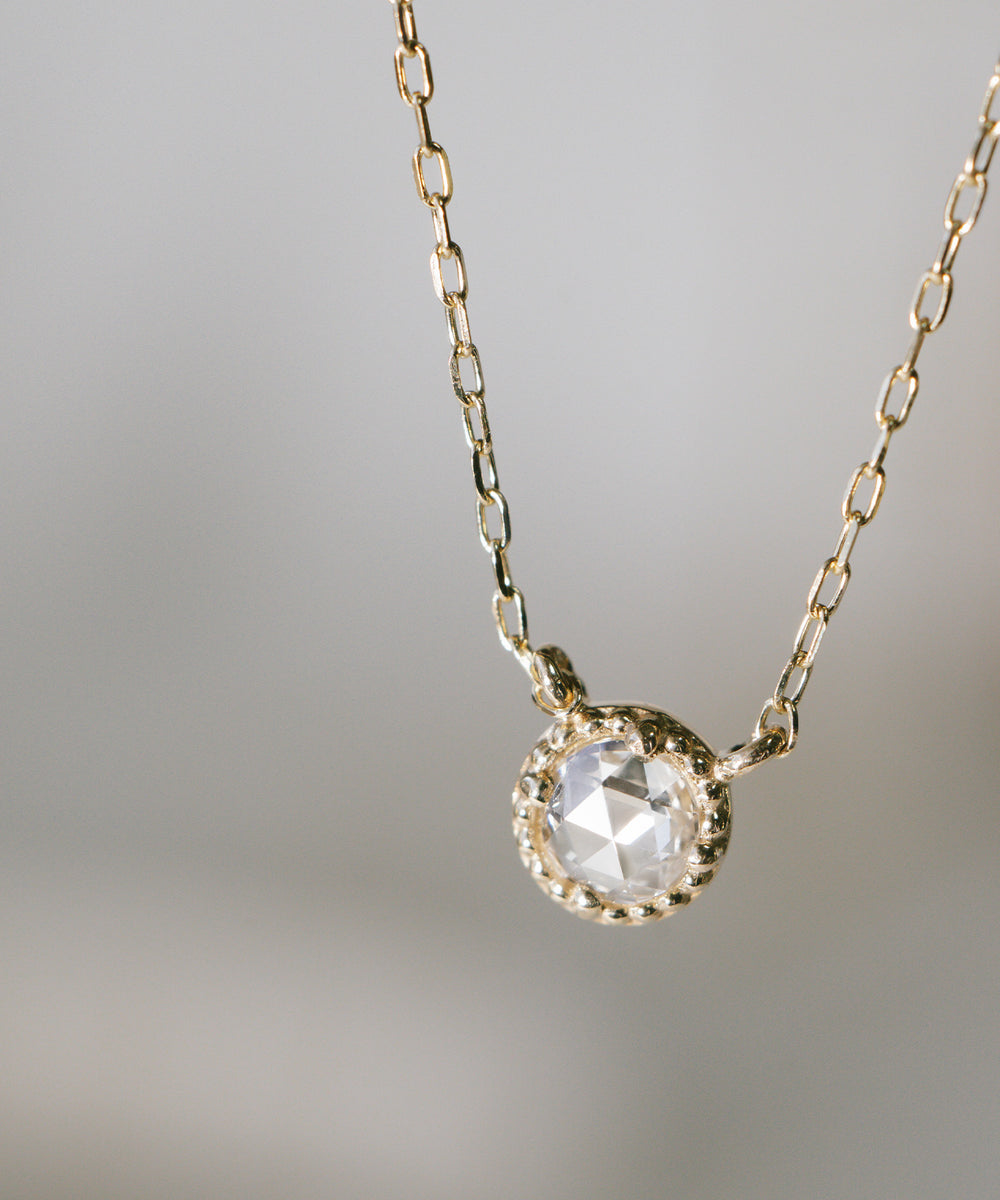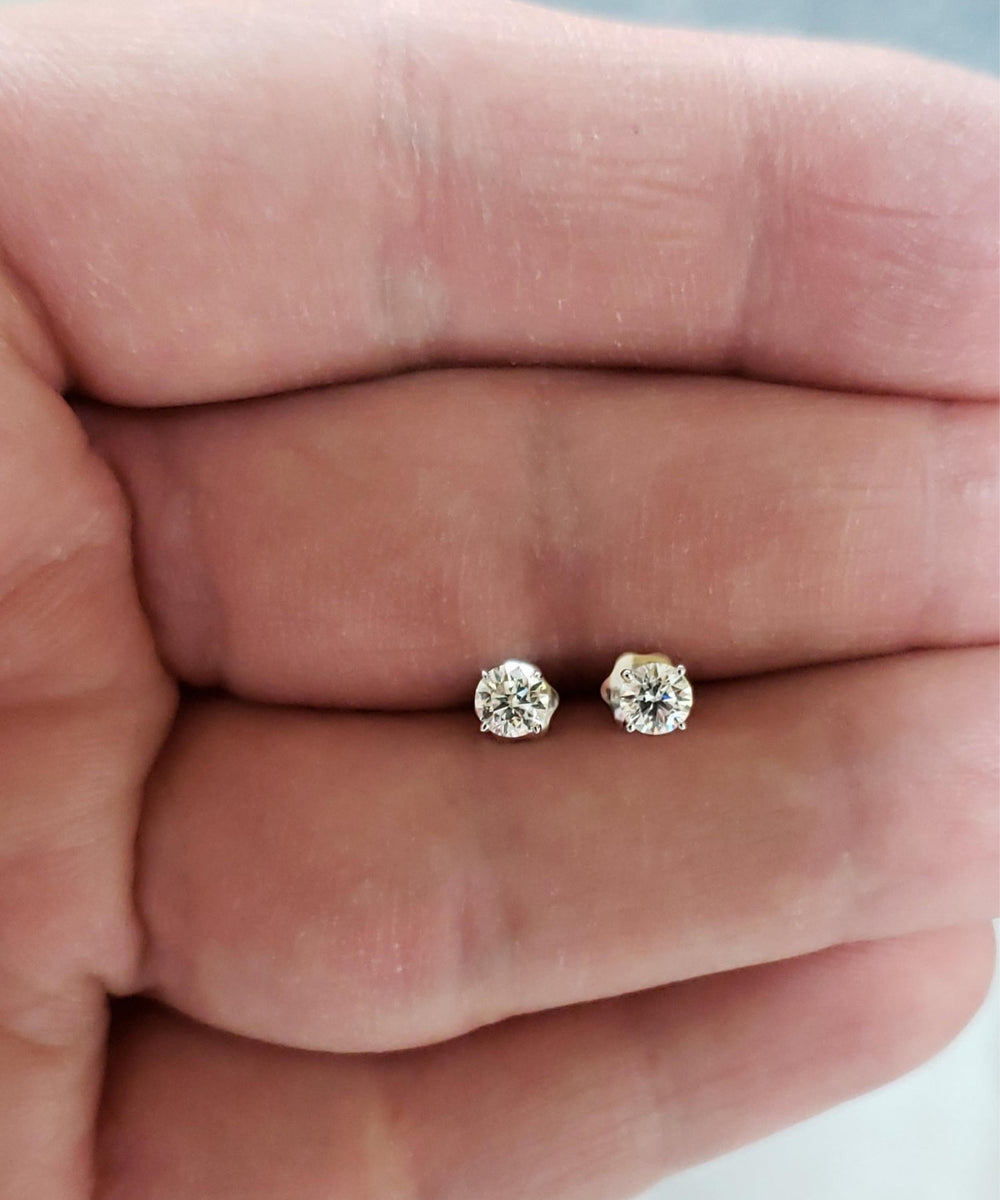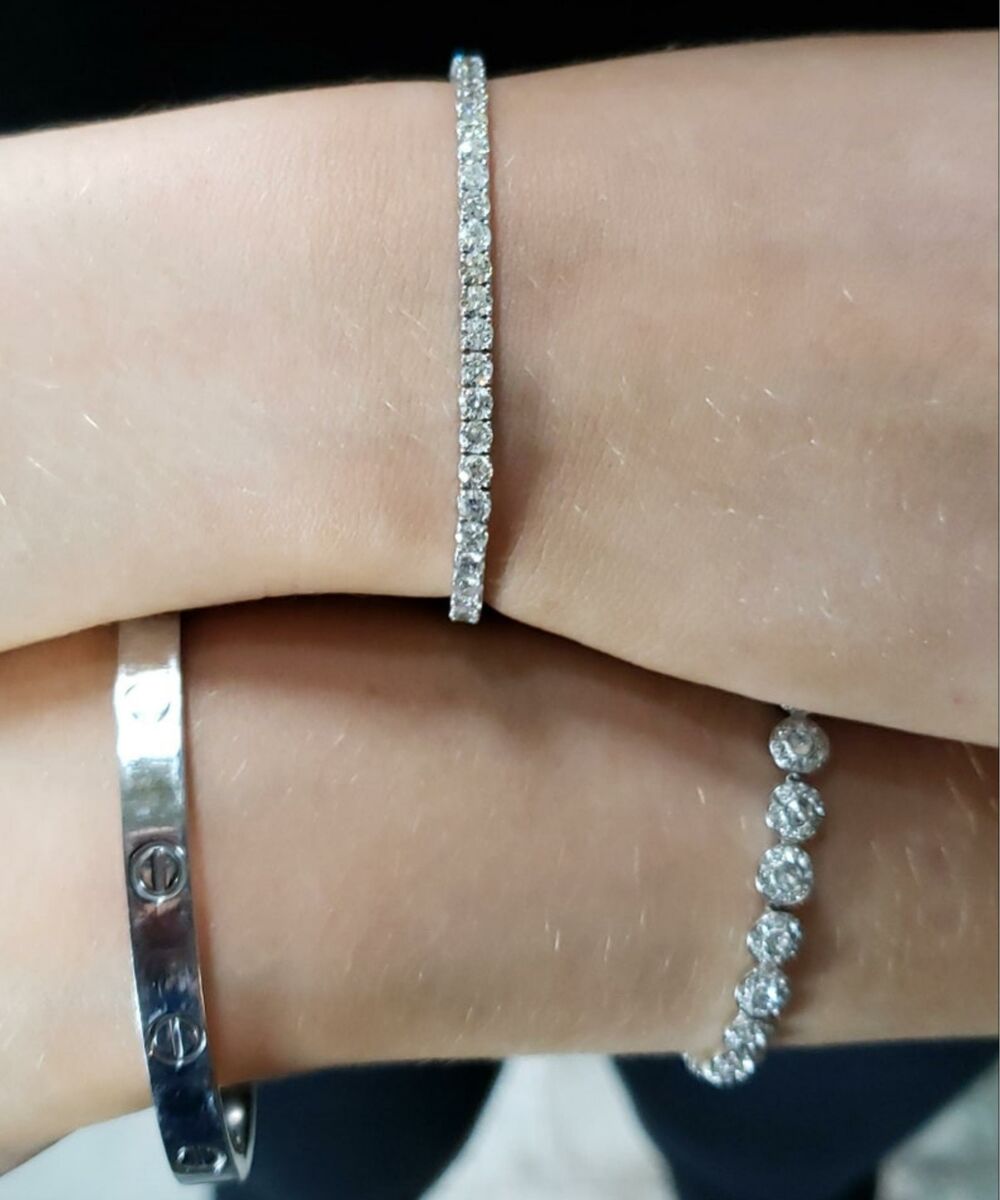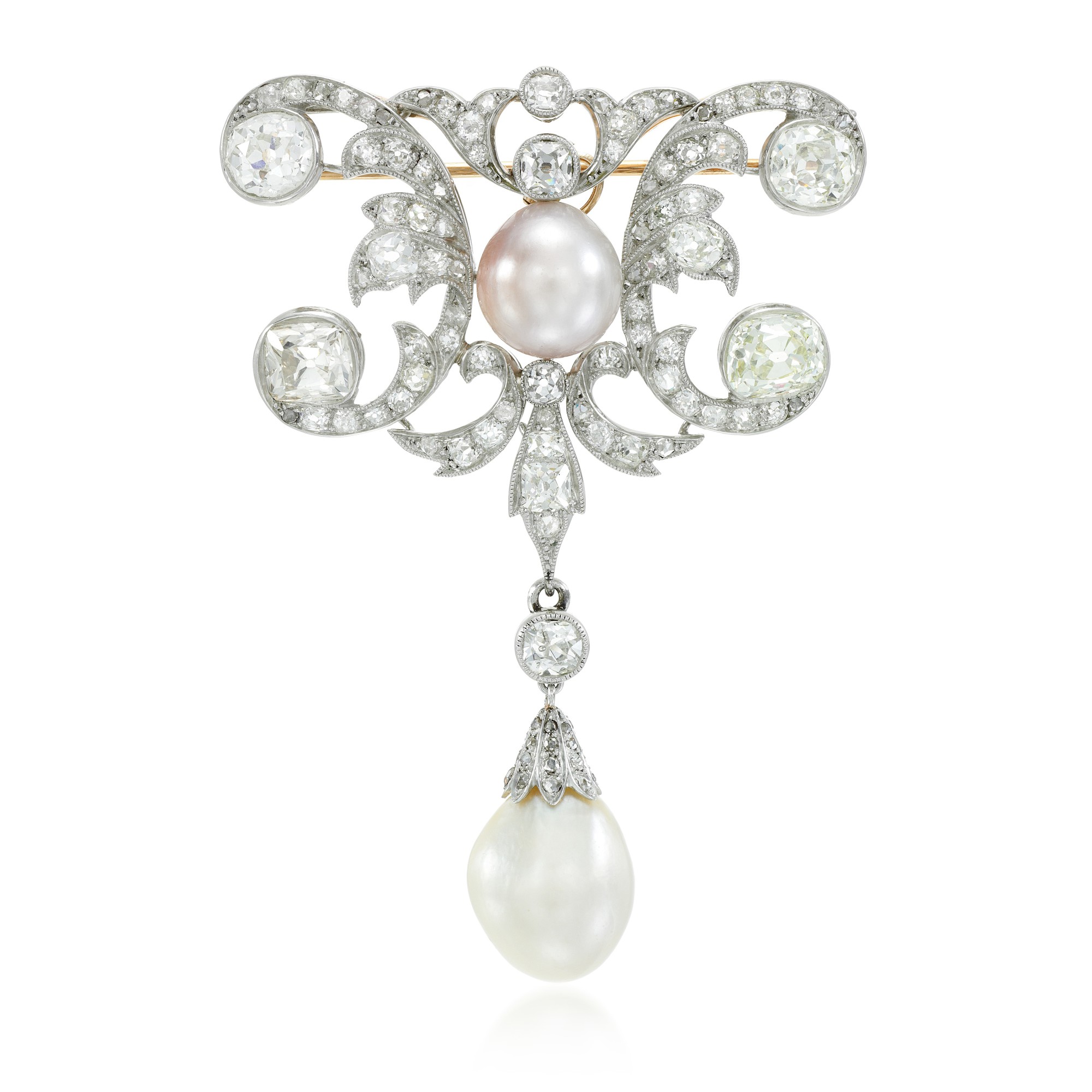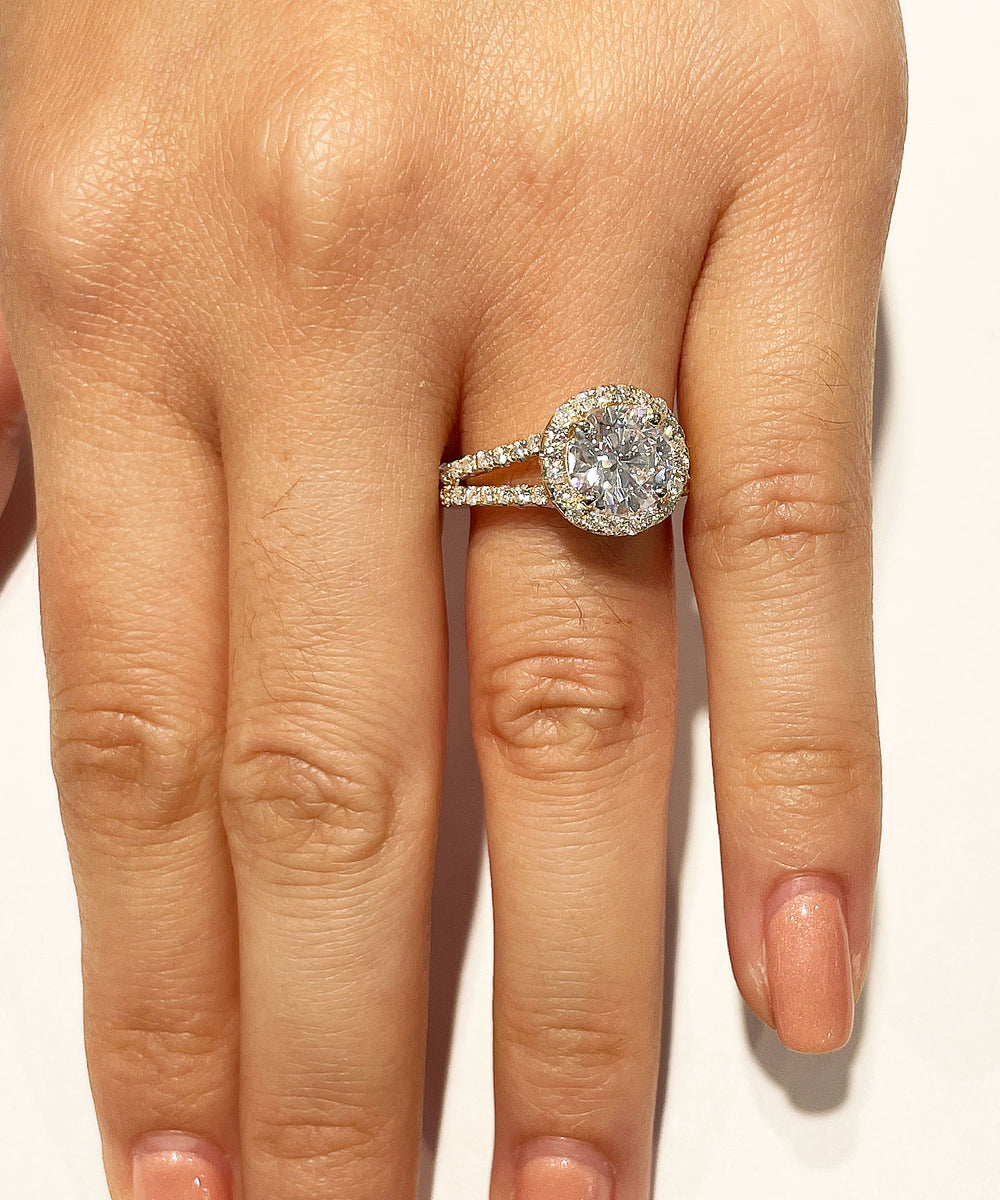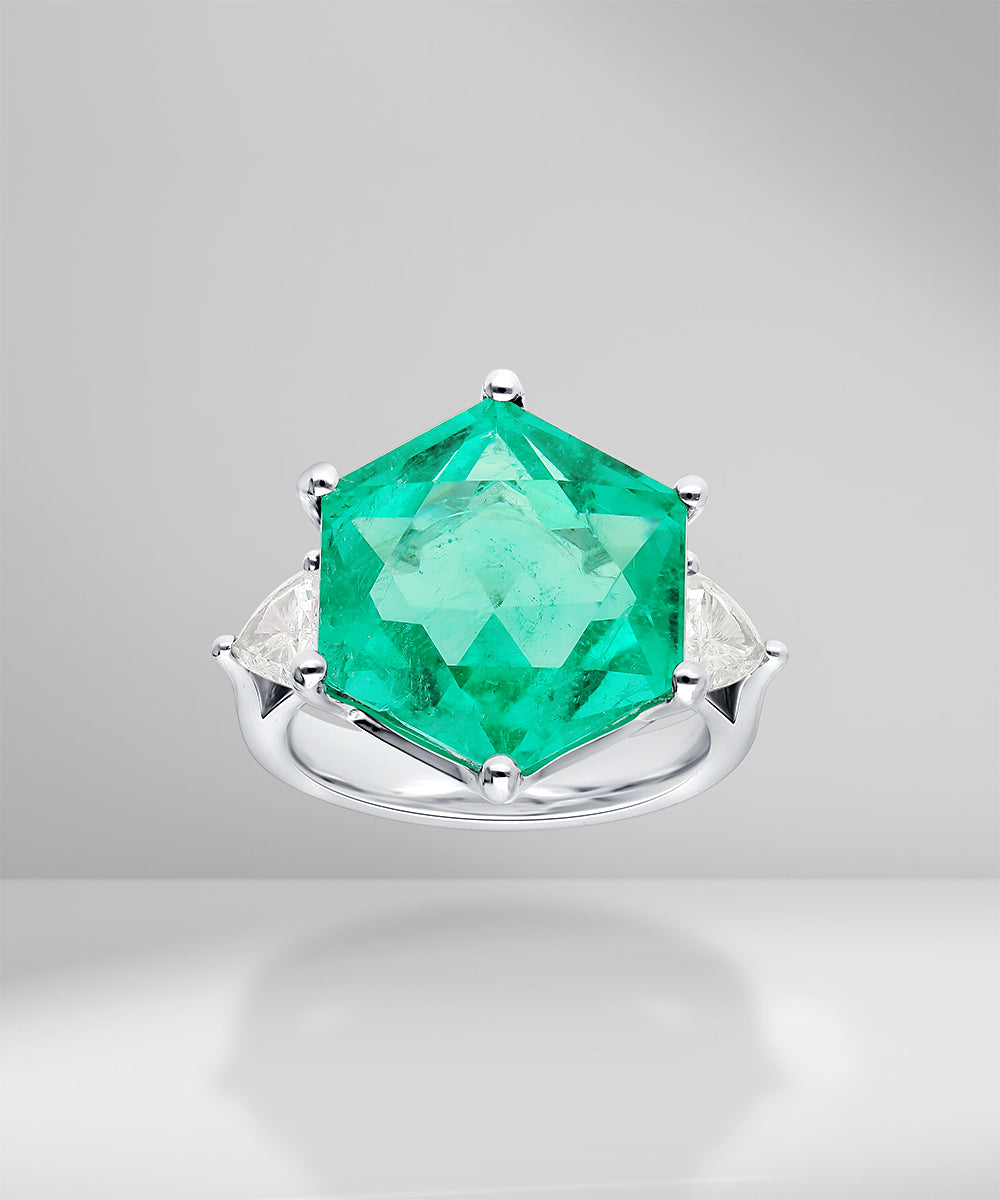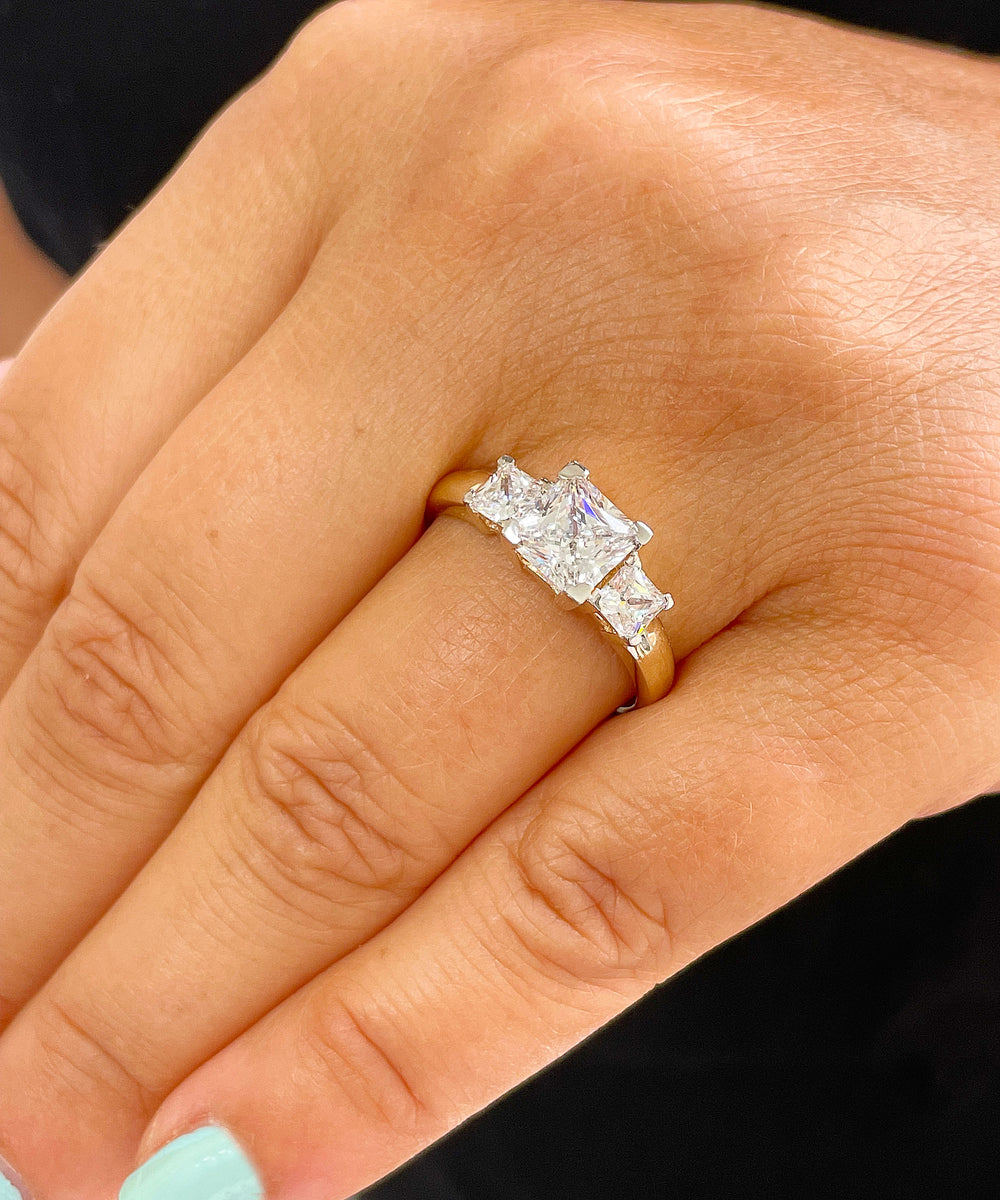
Natural diamondjewelry, a mesmerizing fusion of Earth's geological wonders and human artistry, has enchanted civilizations throughout the epochs. Born deep within the crucible of the Earth, diamondsemerge as timeless treasures, capturing the essence of beauty, rarity, and enduring elegance.
Guided by the 4Cs cut, color, clarity, and carat each diamond is a unique testament to nature's brilliance and the skilled hands that shape these precious gems into works of wearable art. Join us on a journey through the captivating realm of natural diamond jewelry, where brilliance meets craftsmanship in a dance that transcends time.
History Of Natural Diamond Jewelry
The history of natural diamond jewelry is a captivating journey that spans centuries, marked by the allure and mystique of these precious gemstones. Let's delve into the evolution of natural diamond jewelry through vital historical periods;
Ancient Beginnings
The earliest recorded use of diamonds in jewelry dates back to ancient India, where diamonds were gathered from the country's rivers and streams. Diamonds were prized for brilliance and often used in religious icons and royal regalia.
Medieval And Renaissance Periods
During the medieval and Renaissance periods, diamonds became symbols of wealth and status among European aristocracy. Diamonds were set in jewelry such as rings, brooches, and pendants. The use of diamond engagement ringsgained popularity during the Renaissance.
17th To 19th Centuries
The discovery of diamond mines in Brazil in the 18th century led to an increased availability of diamonds. However, diamonds remained relatively rare and were primarily worn by royalty and the elite. In the 19th century, significant diamond deposits were discovered in South Africa, transforming the diamond industry.
Victorian Era
The Victorian era (1837-1901) saw a surge in the popularity of diamond jewelry. Queen Victoria's lovefor diamonds influenced fashion, and diamonds were prominently featured in brooches, tiaras, and intricate engagement rings. Symbolic motifs and intricate designs were prevalent.
Edwardian Era
The Edwardian era (1901-1910) was characterized by delicate and feminine jewelry designs. Platinumbecame the metal of choice, allowing for intricate lace-like patterns and filigree work. Diamonds were often paired with pearls and other gemstones.
Art Deco Period
The Art Deco period (1920s-1930s) brought a shift to bold and geometric designs. Symmetry, clean lines, and contrasting colors defined Art Deco diamond jewelry. Pieces often feature diamonds in innovative settings, creating dynamic and visually striking designs.
Mid-20th Century
After World War II, there was a resurgence of interest in diamond jewelry. The 1950s and 1960s saw the popularity of classic diamond engagement ringstyles, often featuring round brilliant-cut diamonds. Diamonds became synonymous with romance and commitment.
Contemporary Era
In recent decades, natural diamond jewelry has continued to evolve. Designers experiment with various cuts, settings, and metals, offering diverse styles to suit modern tastes. Sustainable and ethical practices have also become essential considerations in the diamond industry.
Innovation And Trends
The diamond industry has witnessed innovations in diamond cutting techniques, introducing cuts like the princess cut and radiant cut. Both classic designs and contemporary fashion, catering to a wide range of preferences, influence trends in natural diamond jewelry.
Natural diamond jewelry, with its timeless beauty and enduring symbolism, remains a cherished and integral part of the jewelry world. From ancient civilizations to modern times, diamonds have captivated hearts and adorned the fingers, necks, and ears of those who appreciate their rare and exquisite nature.
How Do We Identify Natural Diamond Jewelry?
Identifying natural diamond jewelry involves considering various factors, including the characteristics of the diamonds, the setting, and any accompanying documentation. Here are vital steps to help you identify natural diamond jewelry;
Diamond Certification
Check if the diamond comes with a certification from a reputable gemological laboratory. Certificates from organizations like the Gemological Institute of America (GIA), International Gemological Institute (IGI), or the American Gem Society (AGS) provide detailed information about the diamond's cut, color, clarity, and carat weight. Lab certificates are a reliable way to verify the natural origin of a diamond.
Examine The Diamond Characteristics
Natural diamonds exhibit specific characteristics that can help distinguish them from synthetic or treated diamonds. Look for inclusions, which are natural imperfections within the diamond. Natural diamonds may also have features like feathers, clouds, or crystals. If you are unsure, consult with a gemologist for a professional evaluation.
Check For Natural Inclusions
Natural diamonds often have inclusions or internal characteristics. These inclusions are unique to each diamond and can be viewed under magnification. Lab reports from reputable gemological laboratories provide details about the diamond's clarity, which includes information about any inclusions.
Assess Brilliance And Fire
Natural diamonds are known for their exceptional brilliance and fire. Look for the play of light and vibrant reflections within the diamond. Diamonds with strong fire and sparkle are typically natural, although the cut quality also plays a role in the overall brilliance.
Examine Mountings And Settings
Analyze the metal mountings and settings of the jewelry. High-quality natural diamond jewelry is often set in precious metals like goldor platinum. Examine the craftsmanship of the setting, including prongs and other details. Authentic natural diamond jewelry is typically crafted with precision and care.
Authentication Documentation
If you purchase vintageor antique diamond jewelry, check for any authentication documentation or provenance that comes with the piece. This documentation can provide information about the jewelry's age, origin, and history.
Consult A Professional Jeweler Or Gemologist
When in doubt, seek the opinion of a professional jeweler or gemologist. These experts have the knowledge and tools to evaluate diamonds and can provide insights into the jewelry's authenticity.
Verify Hallmarks And Engravings
Check for hallmarks or engravings on the jewelry that may indicate the metal type or the jeweler's mark. Authentic natural diamond jewelry often includes these markings.
Consider The Source
Purchase natural diamond jewelry from reputable and established jewelers. Established jewelry stores with a good reputation are more likely to sell genuine natural diamonds. Be cautious of deals that seem too good to be true.
Identifying natural diamond jewelry requires a combination of visual inspection, knowledge of diamond characteristics, and reliance on reputable certifications and documentation. If you have any doubts, seeking the expertise of a professional gemologist or jeweler is a wise decision.
Best Different Types Of Natural Diamond Jewelry
Natural diamond jewelry comes in diverse styles, each reflecting unique design elements and historical influences. Here are different types of natural diamond jewelry;
Natural Diamond Engagement Rings
Perhaps the most iconic, diamond engagement rings feature a stunning diamond as the centerpiece, symbolizing love and commitment.
Natural Diamond Necklace
Necklacesadorned with diamonds can vary from delicate pendantsto extravagant diamond-studded strands, offering elegance for various occasions.
Natural Diamond Earrings
Diamond earringscome in an array of styles, including studs, hoops, and dangle earrings, showcasing the brilliance of diamonds in diverse settings.
Natural Diamond Bracelets
Diamond braceletscan be classic tennis bracelets, featuring a continuous line of diamonds, or they may incorporate diamonds in unique and intricate designs.
Natural Diamond Brooches And Pins
Brooches and pins with diamond embellishments add a touch of sophistication to attire, often featuring intricate patterns or symbolic motifs.
Natural Diamond Halo Jewelry
In Halo jewelry, the brilliance of a central diamond is elevated to new heights as it's embraced by a radiant circle of smaller diamonds. This design not only accentuates the central stone's sparkle but also infuses a captivating allure into rings, earrings, and pendants, making it a sought-after choice for those who seek both opulence and sophistication.
A Sentimental Odyssey - Symbolism In Natural Diamond Jewelry
Natural diamonds transcend their physical properties to become carriers of profound symbolism. Nowhere is this more evident than in the realm of engagement rings. When a natural diamond graces the ringfinger, it symbolizes enduring love, commitment, and the promise of a shared future.
The emotional resonance of these gems transforms them into tangible expressions of the deepest human connections. Beyond symbolism, natural diamonds often become part of family legacies, carrying with them the stories of generations and milestones.
Why Luxury Jewelry Experts Prefer Natural Diamond Jewelry
Natural diamonds have long been prized for their spiritual value, but today's jewelry specialists are also increasingly conscious of the value these priceless stones offer to those working in the mining, cutting, polishing, grading, and retail communities.
They also understand the long emotional and monetary value that natural diamonds pass down through generations. While some firms assert that their industrially generated diamonds are an "ethical choice," many jewelers and designers prefer to use natural diamonds because of their advantageous societal effects and long-lasting worth.
Natural Diamond Jewelry As Symbols Of Status
Natural diamonds have been synonymous with luxury and status. The inherent rarity of these gems and their timeless appeal make them coveted possessions. Acquiring a piece of natural diamond jewelry is not merely a purchase; it's an indulgence, a statement of refined taste and elevated living. The allure of luxury, woven into the fabric of natural diamonds, continues to captivate those who seek a touch of luxury.
Natural diamonds speak a universal language of luxury. Their presence on the wearer communicates a commitment to the finer things in life. In social settings, diamond jewelry becomes a subtle but unmistakable assertion of a particular lifestyle and elevated standards.
Natural diamond jewelry, especially in the context of engagement rings, symbolizes enduring commitments and significant life milestones. The weight of these moments adds depth to the symbolism of the diamonds, making them more than just adornments.
Benefits Of Natural Diamond Jewelry
Here are the benefits of natural gold jewelry:
- Authenticity and Rarity- Natural diamonds are formed deep within the Earth over millions of years, making each stone unique and rare.
- Symbolic Value - Mined diamonds often carry sentimental value, symbolizing enduring love, commitment, and milestones.
- Traditional Appeal - Many people appreciate the tradition and heritage associated with natural diamonds, especially in engagement and heirloom jewelry.
- Investment Value- Natural diamonds can retain or increase in value over time, making them a potential long-term investment.
- Timeless Beauty - The natural brilliance and fire of diamonds have captivated people for centuries, providing a timeless and classic aesthetic.
How To Clean Natural Diamond Jewelry
Caring for natural diamond jewelry is essential to maintaining its brilliance and longevity. Here are some care tips to keep your natural diamond jewelry looking its best:
Regular Cleaning
Clean your natural diamond jewelry regularly to remove dirt, oils, and other residues. Use a soft brush, mild soap, and warm water for cleaning. Gently scrub the diamonds and the metal settings, and rinse thoroughly. Avoid harsh chemicals and abrasive cleaners.
Professional Cleaning
Schedule professional cleanings at a reputable jeweler. Professionals have the expertise and equipment to clean your diamond jewelry thoroughly and check for any loose stones or potential issues.
Avoid Harsh Chemicals
Diamonds are durable, but the metals used in jewelry settings may not be. Avoid exposing natural diamond jewelry to harsh chemicals such as chlorine, bleach, and strong cleaning solutions. Chemicals can tarnish metals and potentially damage the settings.
Safe Storage
Store your natural diamond jewelry in a soft pouch or a jewelry boxwith compartments to prevent scratching and tangling. Diamonds can scratch other diamonds and softer gemstones, so keep pieces separated.
Gentle Handling
Handle your natural diamond jewelry with care. Avoid touching the diamonds with your fingers, as oils from your skin can reduce their brilliance. When putting on or removing jewelry, do so on a soft surface to prevent accidental damage.
FAQs
How Can I Determine If A Diamond Is Natural Or Synthetic?
Determining the origin of a diamond involves examining its characteristics and obtaining certification. Reputable gemological laboratories, such as GIA or IGI, provide certificates that specify whether a diamond is natural, synthetic, or treated. Consulting with a professional jeweler or gemologist can also help in accurate identification.
What Is The Significance Of The 4Cs (cut, Color, Clarity, Carat) In Natural Diamonds?
The 4Cs are crucial factors that determine the quality and value of a natural diamond. Cut refers to the diamond's proportions and how well it reflects light. Color assesses the presence of color, with higher-quality diamonds being colorless. Clarity evaluates the presence of internal and external flaws, and carat measures the weight of the diamond.
How Do I Care For And Clean Natural Diamond Jewelry?
Cleaning natural diamond jewelry involves using a soft brush, mild soap, and warm water. Gently scrub the diamonds and the metal settings, and rinse thoroughly. Avoid exposing diamonds to harsh chemicals, and consider professional cleanings periodically. Store your jewelry in a soft pouch or box to prevent scratching.
Are Vintage Or Antique Diamond Jewelry Pieces Less Valuable?
Vintage and antique diamond jewelry can be precious, often possessing unique designs and historical significance. The value depends on factors such as craftsmanship, age, rarity, and the piece's historical context. Authenticity and provenance documentation can contribute to the value of vintage or antique jewelry.
Can Natural Diamond Jewelry Be Customized Or Resized?
Yes, natural diamond jewelry can often be customized or resized. However, consulting with a skilled jeweler who specializes in working with diamonds and precious metals is essential. Modifications should be approached with care to preserve the integrity of the piece and its value.
Conclusion
Natural diamond jewelry, a timeless embodiment of beauty and craftsmanship, captivates hearts through the ages. From ancient origins to contemporary elegance, these gems, defined by the 4Cs, symbolize love, commitment, and sophistication. Careful maintenance ensures their enduring brilliance.
As we appreciate their enduring allure, natural diamonds stand not just as adornments but as reflections of Earth's magnificence, connecting us to the profound beauty within our planet.
